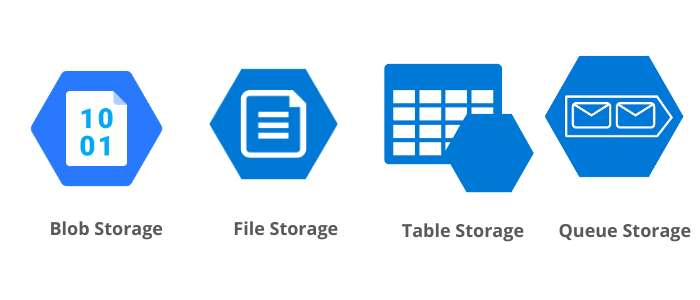

When you make a request to the Storage service, you will have to provide the security information for the storage account in the header of the message. If somebody is manipulating the data in an account, they should have the rights to do that, and that means they should have valid keys. To prevent this, the storage services use standard SSL security to protect the communication between the clients and servers. Now to access this information, you will want to implement standard security to ensure there are no man-in-the-middle attacks.
#Blob storage vs file storage how to
Any device that knows how to speak through HTTP can access the storage. You can just create HTTP requests from your devices to Storage Uris and then access tables, blobs, and queues. You can find connection strings for your client applications by clicking Access keys.Īll the Azure storage services are accessible through the REST API which is the HTTP API that can be accessed from devices. Once the Azure Storage account is created and you click on it to see the properties, you will see that it supports services for Blobs, Files, Tables, and Queues. After you click Storage Account, you will see an option to add a new one. If you don’t see it, click All services and then filter for storage. You will then notice that there is an option called Storage Account. Once you login to Azure Portal, you will see all the services that Azure provides on the left panel of the page. The first step is to create the storage account in your Azure Subscription. You can choose which of the options suits your requirements. Once you create your storage account, you will have all the Queues, Blobs, Tables, and Files underneath that account.

This can be done by adding a new Storage account using the Azure portal. You will need to set up your Azure Storage Account in your Azure Subscription. Azure Storage AccountĪ storage account houses all four types of storage. These can be thought of as an efficient alternative to traditional on-premises file server storage. This storage type is mainly used to store files in the cloud, and they are typically accessible through the SMB (Server Message Block) protocol. In addition to this, you can access the message from any corner of the world by HTTP or HTTPS method calls.
#Blob storage vs file storage update
Storage queue APIs are lease-based you can renew or update the lease using appropriate API method calls. Queues can be considered as shorter-term storage, the message on queues can live for a maximum of seven days. After the message is processed, you can recycle that message, or you can keep it in the storage so that you can do additional work on it. Queues are primarily created for messaging, where you can put a small piece of data into the queue and then read and process the information in a first come first serve fashion. Blobs take advantage of Content Delivery Network to give you more scale internationally. Blob storage is a massively scalable object store for text and binary data. You can access them like a hard drive you can even store virtual hard drives in blob storage.

Blob storage allows you to access them very efficiently in a variety of ways. Anything that you come across on the computer or phones such as images, video files, audio files, pdfs, and larger documents. This is for larger files and has the capability to store a massive amount of unstructured data. It has an extraordinary ability to scale as per needs. You can easily access the data using a clustered index. Table storage stores large amounts of structured data.+ This gives you the ability to store entities with name and value pairs. This article will describe the four types of storage and an overview of Azure Storage accounts and the Azure Storage Explore application. Azure Storage, Microsoft's cloud storage solution, provides the most efficient, scalable, and reliable solution for data storage and accessibility in the modern data storage world.


 0 kommentar(er)
0 kommentar(er)
